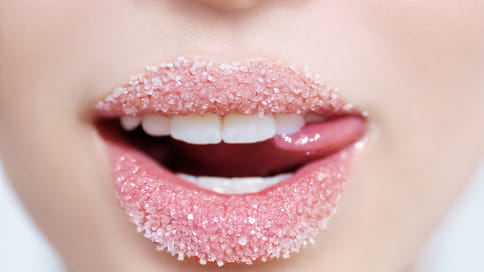Your Grace – Style – Kommersant
[ad_1]

This summer, TikTok was swept by a wave of a new trend for the so-called turkey teeth – “tourist” teeth whitening in Turkey. But it had nothing to do with real whitening: in the commercials, people simply grinded their teeth and covered them with dazzling white crowns. Kommersant Style dispels speculation about the most common dental procedure and talks about what modern whitening actually looks like and how long the result lasts.
Every second recent craze associated with a healthy lifestyle either begins or receives a new impetus in its development during a pandemic. Teeth whitening is no exception. Being in work video chats has influenced the growth of interest not only in plastic surgery and various means of improving appearance, but also in teeth whitening. According to SmileDirectClub, a company that sells aligners and at-home teeth whitening kits, demand for this kind of products increased by 47% in 2021. Despite such a boom in demand, there are fairly persistent myths and prejudices in matters of both home and professional whitening.
Myth 1: Teeth can be whitened with toothpaste.
Whitening paste creates only the appearance of white and healthy teeth, but does not change the natural color of the tooth (dentin). You can’t use such pastes all the time because of their high abrasiveness: they act on the enamel in the same way as a cosmetic scrub on the skin, and their own pigment can get into the micro-holes in the tooth enamel, and therefore over time they can become yellower than they were before. start using the paste.
Myth 2: Home whitening is safer than professional whitening
Charcoal, baking soda, lemon, and hydrogen peroxide are the most popular homemade teeth whitening ingredients. Also, the “folk” ingredients include salt, strawberries, vinegar and pineapple – you can’t find any kind of whitening cocktails in the notorious TikTok. However, experts are sure that none of this can actually be used, as enamel can be damaged. “The teeth from such whitening really become lighter,” says Olga Samsonenko, dentist-therapist at the Refformat clinic. – But only because their enamel is erased and stains, scratches and sensitivity can appear on it. Special strips and mouth guards can be used at home, but you need to understand that the result will be uneven and short-lived.
Myth 3: Professional whitening permanently damages enamel
Despite this prejudice, professional whitening is still the most common procedure among all dental ones. The global teeth whitening market is valued at almost $7 billion and will reach almost $12 by 2030 with an average annual growth of 5%. However, concerns about the preservation of the integrity of enamel are not accidental – it is indeed extremely important for dental health, although it naturally wears off over time – which is why older people tend to have yellower teeth. Used for professional whitening mixtures based on hydrogen peroxide or carbamide peroxide act only on the pigment, without affecting the enamel.
Myth 4: Teeth look unnatural after professional whitening.
It turns out that teeth cannot be whitened to an unnaturally white color. “Dazzlingly white, directly “glowing” teeth are veneers, and then of the old model,” says Olga Samsonenko. – The results of whitening will be different for each person, but no one will have unnaturally white teeth. Immediately after the procedure, the teeth have a slightly bluish tint, and after a few days they are saturated with moisture and become muted, naturally white. To determine the shade of teeth, dentists use the Vita scale. Generally, the most popular natural tooth color for most people is yellowish A3. After professional whitening, teeth are usually matched to shades B1 or A1 on the palette.
Mark Lowenberg, MD, and cosmetic dentist at Lowenberg, Lituchy & Kantor in New York, says that it is impossible to choose the desired shade of teeth before whitening, since it depends on individual parameters – the thickness and density of the teeth. Interestingly, the natural shade of the teeth correlates with the color of the skin and eyes.
Myth 5: Professional whitening makes teeth sensitive
This is true. Severe sensitivity occurs immediately after the procedure and lasts up to two days. This happens due to the fact that the chemical composition penetrates deep into the dentin, opening the dentinal tubules and affecting the pulp (loose fibrous connective tissue that fills the tooth cavity). But in general, the presence of natural sensitivity, untreated caries, periodontal disease and tartar are contraindications to the procedure.
[ad_2]
Source link





